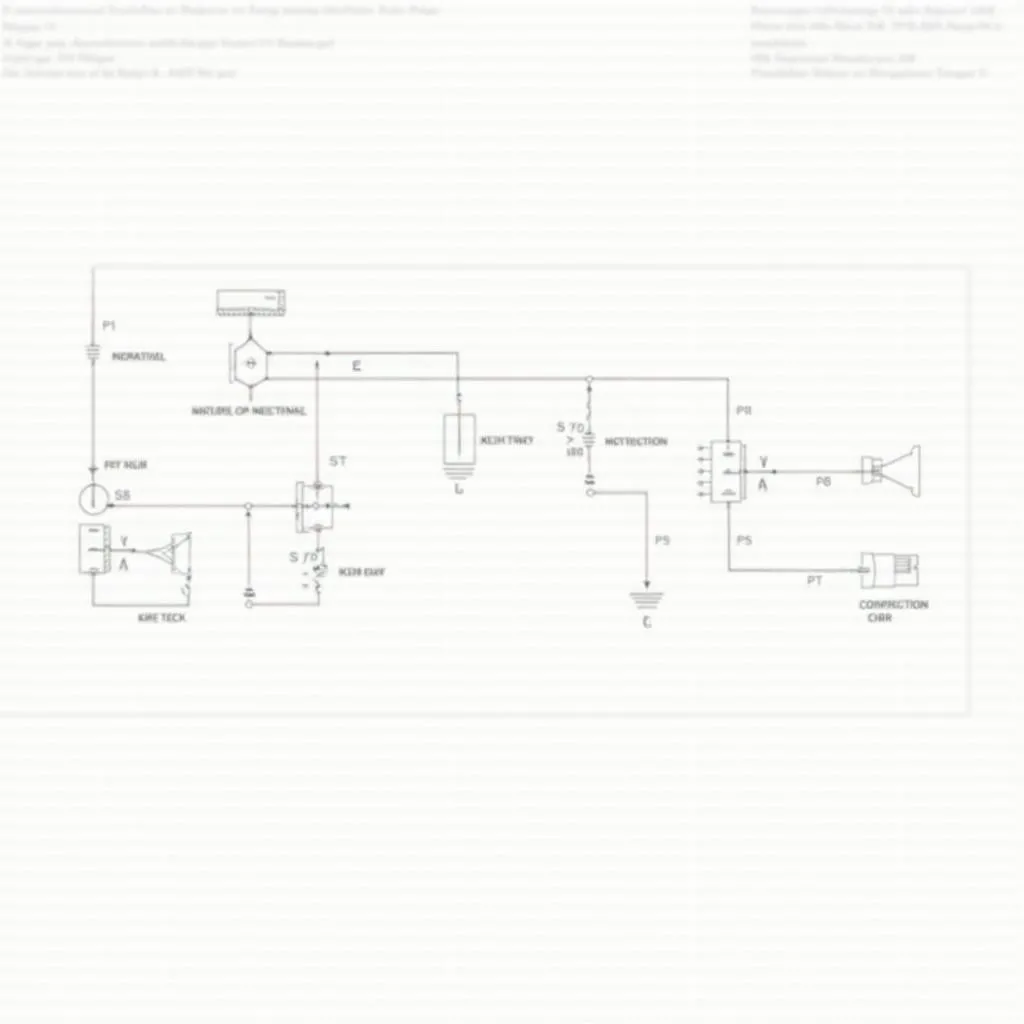A car battery powers the starter motor and the ignition system. If your battery is working but your car won’t start, the problem lies elsewhere. This guide provides detailed troubleshooting steps, potential causes, and solutions for this frustrating situation. Let’s dive into why your car might refuse to cooperate, even with a fully charged battery.
Understanding the Starting System
A car’s starting system is more than just the battery. It involves several key components working together seamlessly. These include the starter motor, ignition switch, solenoid, and related wiring. A fault in any of these components can prevent the engine from turning over, even with a good battery. For example, a faulty starter motor might draw power from the battery but fail to crank the engine. Similarly, a problem with the ignition switch could prevent power from reaching the starter in the first place.
Common Causes of a Car Not Starting with a Good Battery
Several issues can prevent your car from starting despite having a working battery. Here are some common culprits:
- Faulty Starter Motor: The starter motor is responsible for cranking the engine. A worn-out or malfunctioning starter motor might click but fail to engage the engine’s flywheel.
- Ignition System Problems: The ignition system creates the spark that ignites the air-fuel mixture in the engine cylinders. Issues with the ignition switch, coil, distributor, or spark plugs can prevent the engine from firing.
- Fuel System Issues: Even with a working starter and ignition, the engine won’t start without fuel. Problems with the fuel pump, fuel filter, or injectors can starve the engine of fuel.
- Bad Alternator: While a bad alternator won’t prevent the car from starting initially, it can drain the battery while driving, eventually leading to a no-start condition.
- Wiring Issues: Corroded or loose connections, especially to the starter and battery terminals, can disrupt the flow of electricity.
- Security System Malfunction: Sometimes, the car’s anti-theft system can prevent the engine from starting if it detects a problem.
Troubleshooting Steps
Here’s a step-by-step guide to diagnose the problem:
- Check the Battery Connections: Inspect the battery terminals for corrosion or loose connections. Clean the terminals and tighten the clamps.
- Test the Starter: If you hear a clicking sound when you turn the key, the starter solenoid might be faulty. Tapping on the starter motor sometimes helps temporarily.
- Inspect the Ignition System: Check for spark by removing a spark plug and grounding it against the engine block while someone cranks the engine. If there’s no spark, the ignition system needs further investigation.
- Examine the Fuel System: Listen for the fuel pump when you turn the key to the “on” position. If you don’t hear it, check the fuel pump fuse and relay.
- Check the Security System: Try a spare key or see if the security light is flashing.
 Checking Car Spark Plugs
Checking Car Spark Plugs
Remote Diagnostics and Programming Solutions
Sometimes, complex electrical issues require specialized diagnostic tools and software. Remote diagnostics and programming services can identify and resolve problems related to the car’s electronic control unit (ECU), including issues with the starter, ignition, and fuel systems. These services can be a valuable time-saver and cost-effective alternative to traditional repair methods. You might be interested in a pioneer bluetooth car radio deh-s4250bt if you need an upgrade.
“Remote diagnostics and programming can often pinpoint complex electrical problems that traditional methods might miss,” says John Smith, Automotive Electrical Engineer. “This technology allows us to address issues quickly and efficiently, minimizing downtime for the vehicle owner.”
Conclusion
A “battery working but car not starting” scenario can be frustrating, but with a systematic approach, you can pinpoint the root cause. By following the troubleshooting steps and considering the potential causes outlined in this guide, you can get your car back on the road. Don’t forget to explore options like remote diagnostics for efficient and accurate problem-solving. Remember, a working battery is just one piece of the puzzle when it comes to starting your car. For further information, check out resources on 2006 mercury grand marquis 18c869 aa car radio wiring diagrams.
“Modern cars are increasingly reliant on complex electronics. Understanding the interplay of these systems is crucial for effective troubleshooting,” adds Sarah Johnson, Automotive Diagnostic Technician. Sometimes a simple solution like a walmart car fm radio bluetooth could be what you need.
FAQ
- Can a bad alternator prevent a car from starting? While a bad alternator won’t directly prevent starting, it can drain the battery, eventually leading to a no-start condition. Consider a currys bluetooth car radio for a modern sound system.
- What is the most common reason a car won’t start with a good battery? A faulty starter motor is a frequent culprit.
- How do I test a starter motor? A clicking sound when turning the key can indicate a starter solenoid problem. Tapping the starter might temporarily help. For budget-friendly options, explore the bluetooth car radio cheapest price.
- Can a security system prevent a car from starting? Yes, a malfunctioning security system can immobilize the engine.
- What should I do if my car won’t start and the battery is good? Follow the troubleshooting steps outlined in this guide, and if necessary, seek professional help.
- How can remote diagnostics help with car starting problems? Remote diagnostics can identify complex electrical issues that traditional methods might miss.
- What are some signs of a failing ignition system? A lack of spark, engine misfires, or difficulty starting are potential indicators of ignition problems.


